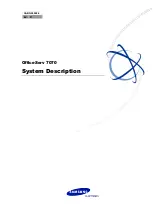
Installation
Checkout Interconnect System
Summary: Perform the following steps to ensure proper operation of the interconnect system. See the
Troubleshooting Section for more detailed checks and tests.
Step 1.
Step 2.
Note:
Step 3.
Step 4.
Note:
Step 5.
Key Phones Test
(Admin A: l--). (Refer to the TCIV and Key System Operations Instructions.)
Using each key phone and each key, obtain TCIV dial tone and verify the appropriate key
phone lamps light. Place a call to each key phone line thru the TCIV and verily audible ring at
the proper instruments and ring flashing on the proper keys of all instruments.
If crosstalk occurs between key phone lines, perform the Line
Rebalancing Proce-
dure
in the Troubleshooting Section.
Verily the Key Phones each act as operator consoles to perform the following functions:
Answer incoming calls.
Transfer incoming calls.
Break into calls.
Page remote pick-ups.
Night pick-up.
Answer internal dial “0”.
Any key phone key has the following characteristics:
If not associated with a particular trunk, incoming calls go to first available key and the key
clears when the call is transferred. Programming can provide dial “0” for console phone, or
dial various numbers for individual keys.
Outgoing
Trunk Test
(DISA):
Using an administrative phone, dial the Architectural Number of the interconnect line under
test. If single digit dialing interferes with dialing the architectural number, it may be temporar-
ily defeated (refer to the Programming Section). The CO LED on the TC4171 (COA) module
should glow, indicating the presence of loop current on the Central Office’s (or PBX’s) side of
the TC4171, and you should get a dial tone from the CO. or PBX remote system. Verify the
ability to dial through and establish communication with any extension of that system. Hold
the connection for 45 seconds, then hang-up and verify a proper disconnect (the CO LED on
the COA goes off).
Incoming
Trunk Test (AAI
and DIL)
:
Have a call placed from the remote system or another CO line. When ringing occurs, the TC
LED on the TC4 171 should glow, indicating that the TC4171 (COA) has responded by
sending loop current to the Telecenter (an external service request will trigger the same
response). As soon as the TCIV answers and gives the dial tone to the DISA trunk, the CO
LED should glow, due to the loop current from the central office (or PBX).
In the case of DIL or AAI lines, the CO LED will not light and loop current will not occur until
a target phone within the TCIV goes off hook to answer the call.
Once the above tests have been completed and the hardware and wiring are known to be
okay, Telecenter software can be altered to meet system requirements.
(Refer to the Programming manual, Kl-1584.)
Page
16 of
20 © 1989 Rauland-Borg Corporation (Orig. 10/88; Rev. l/89)























